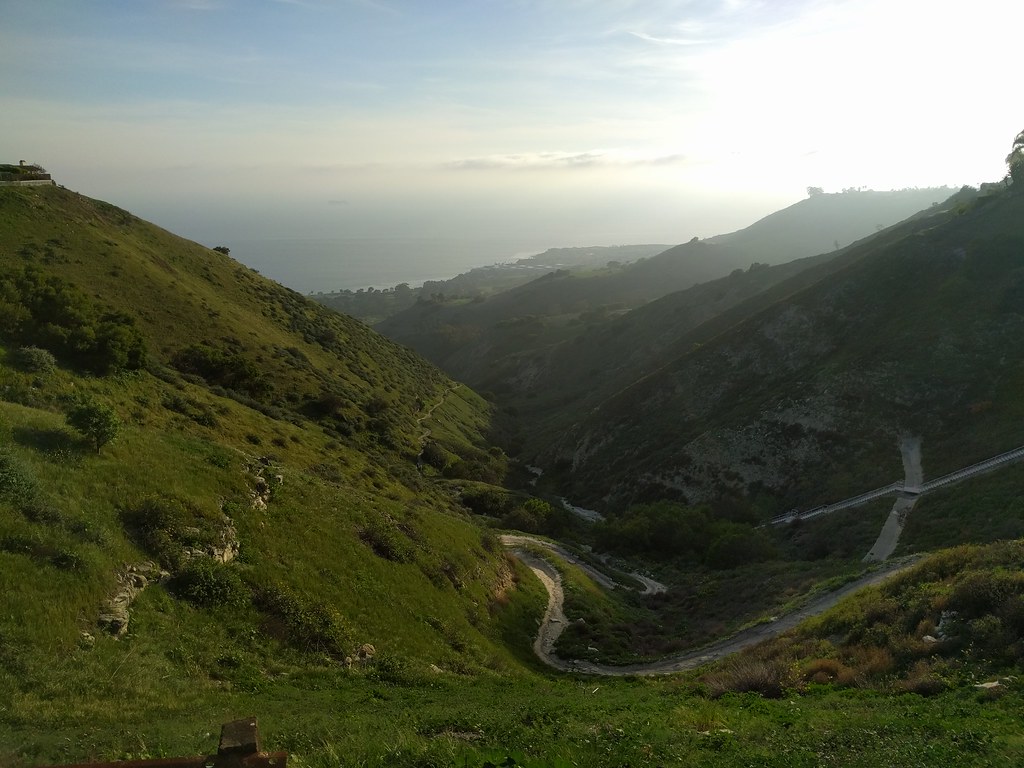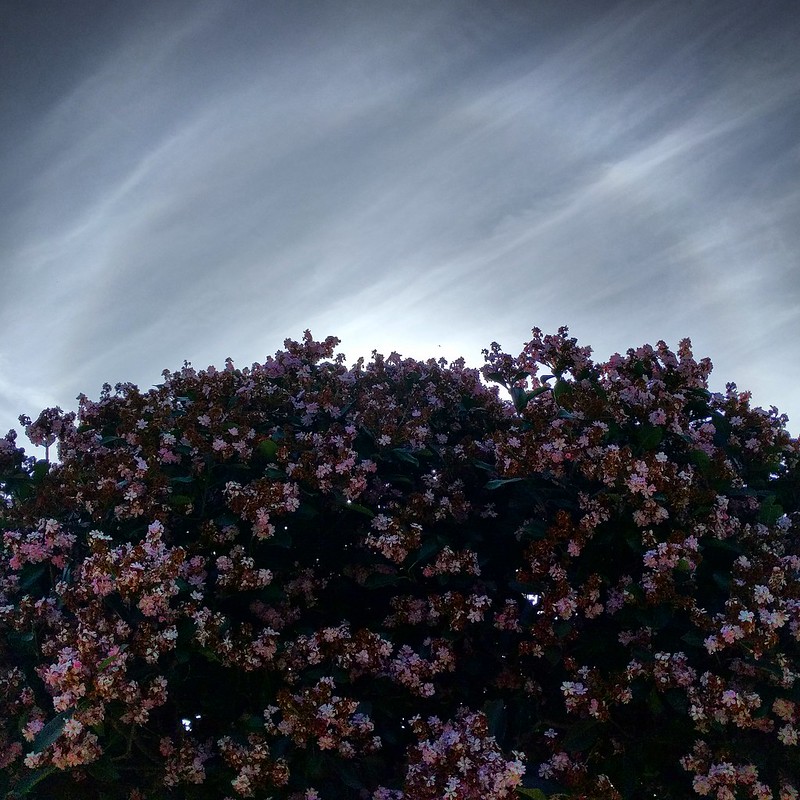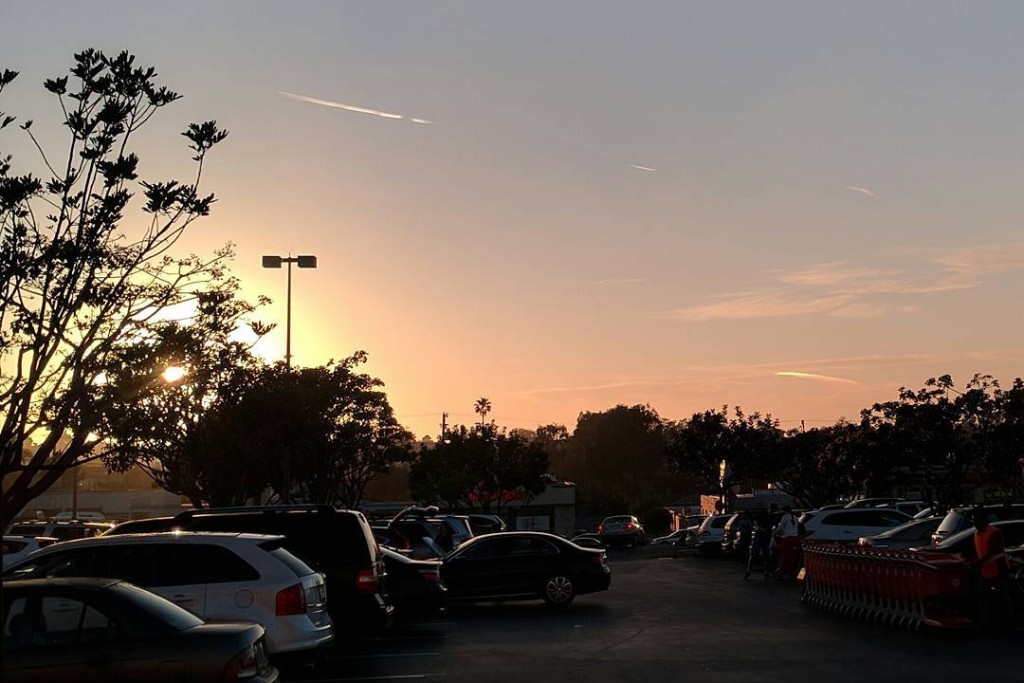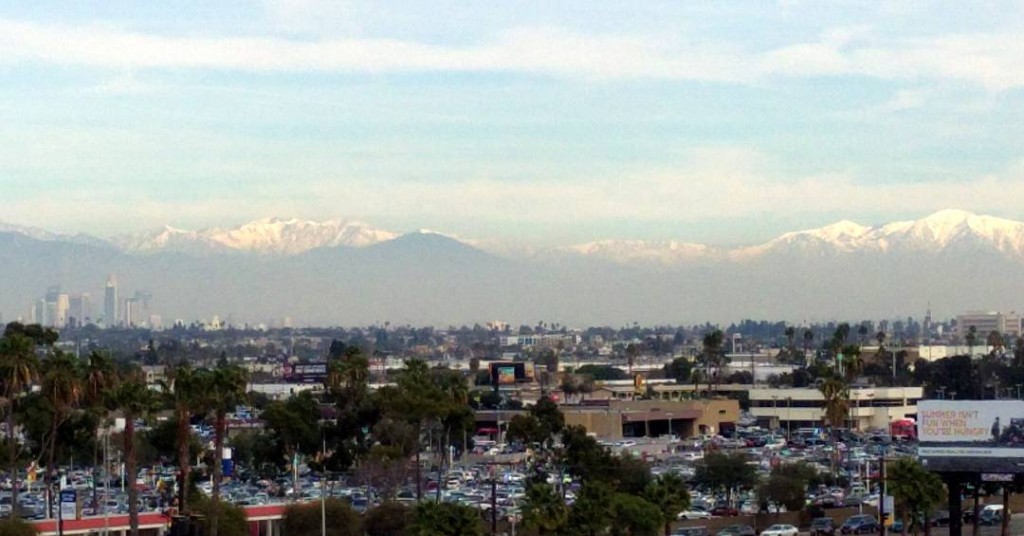
After an afternoon of ice skating, I talked the family into making a quick trip up to Del Cerro Park in Palos Verdes. It takes a while to get there from home, but since we were already up in the hills for the ice rink, it was about five minutes. My original plan was just to walk out there myself, spend five minutes enjoying the view and taking pictures, then head back, but the five-year-old wanted to come along rather than wait in the car with mom.
Of course kids have their own pace, and while he wasn’t terribly interested in looking out at the ocean from a hilltop a few thousand feet up, he was fascinated by a lot of the other things along the way, which was how we ended up getting close to the hilltop at the right time for this view of the sky, sundogs, cirrus clouds, criss-crossing contrails, and silhouetted trees.
To be honest, he wasn’t terribly interested in that view either. At five, checking out foxtails and giant clover and gopher holes and fragments of concrete slabs (in a suspiciously flat and rectangular depression) and looking for the entrance to an incredibly long stairway and climbing and balancing on logs and looking for “the actual park part of the park” (i.e. the playground) are more appealing, and I barely had a chance for this moment to register.

We did eventually make it up to the top of the hill and the viewpoint. The ocean was covered in haze, completely blocking the view of Catalina Island and any chance of watching the patterns made by ocean currents and waves far below. That was fine. It wasn’t the highlight for either of us.







